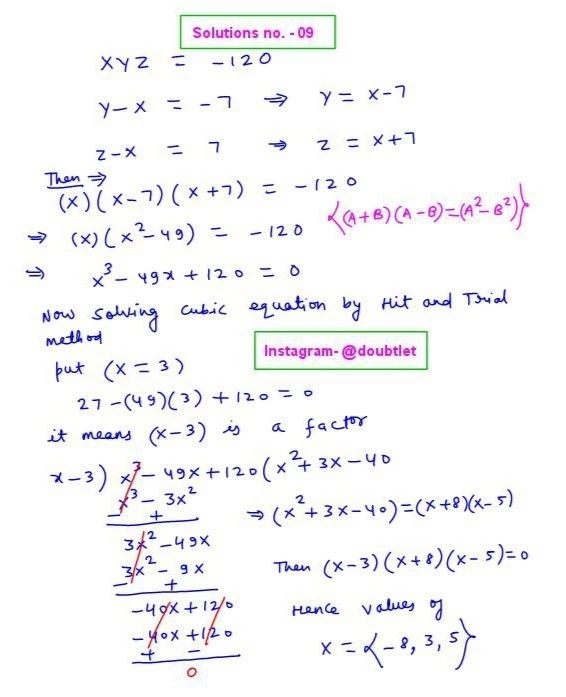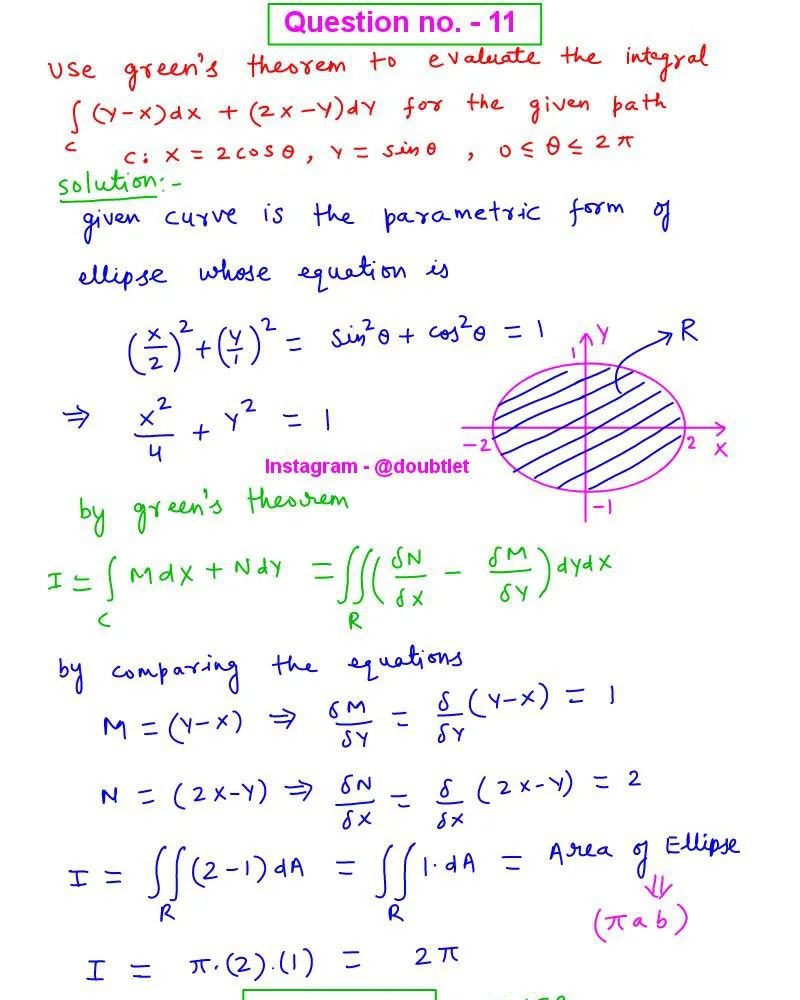









Gauss-Jordan Elimination Method - Step-by-Step Guide, Definition & Examples
Learn the Gauss-Jordan Elimination method with this comprehensive step-by-step guide. Understand how to solve systems of linear equations efficiently with examples, rules, and practice problems. Perfect for students and math enthusiasts!The Gauss-Jordan Elimination Method is a systematic algorithm used to solve systems of linear equations by transforming a matrix into its reduced row echelon form (RREF). This method simplifies finding solutions, matrix inverses, and determining matrix rank by using row operations to eliminate variables and achieve a form where solutions can be directly read.

Neetesh Kumar | September 22, 2024
Share this Page on:
![]()
![]()
![]()
![]()
![]()
- 1. Introduction to the Gauss Jordan Elimination Method
- 2. What is Gauss Jordan Elimination Method
- 3. How to find the Gauss Jordan Elimination Method
- 4. Rules for Gauss Jordan Elimination Method
- 5. Properties of Gauss Jordan Elimination Method
- 6. Gauss Jordan Elimination Method Solved Examples
- 7. Practice questions on Gauss Jordan Elimination Method
- 8. FAQs on Gauss Jordan Elimination Method
- 9. Real-life application of Gauss Jordan Elimination Method
- 10. Conclusion
1. Introduction to the Gauss Jordan Elimination Method:
The Gauss-Jordan Elimination Method is an algorithmic technique used to solve systems of linear equations. This method transforms a matrix into its reduced row echelon form (RREF), simplifying the process of solving linear systems, finding matrix inverses, and determining matrix rank. It is a refined version of Gaussian elimination, and it involves elementary row operations that make matrix-based computations easier and more accurate, especially when solving simultaneous equations.
2. What is Gauss Jordan Elimination Method:
The Gauss-Jordan Elimination Method is a systematic process used to solve linear systems by transforming a matrix into its reduced row echelon form. The method uses a sequence of row operations to simplify the matrix, ultimately converting it into a form where the solution to the system can be easily read off.
In reduced row echelon form:
- Every leading entry (pivot) in a row is .
- Each pivot is the only non-zero entry in its column.
- Rows of zeros, if any, are at the bottom.
Once the matrix is in this form, the solutions to the system of equations can be easily extracted.
3. How to find the Gauss Jordan Elimination Method:
To apply the Gauss-Jordan Elimination Method, follow these steps:
Step 1: Form the Augmented Matrix
Create an augmented matrix by appending the column of constants from the system of linear equations to the coefficient matrix.
Step 2: Apply Elementary Row Operations
Use the following row operations to transform the matrix:
- Swap two rows.
- Multiply a row by a non-zero scalar.
- Add or subtract multiples of one row to another row.
Step 3: Create Leading ’s (Pivots)
Begin with the first column and aim to make the leading coefficient (pivot) of each row equal to by multiplying or dividing the row.
Step 4: Eliminate Above and Below Pivots
Once a pivot is in place, use row operations to ensure all elements above and below the pivot are zeros.
Step 5: Repeat for Each Column
Move to the next column and repeat the process until all columns are processed.
Step 6: Read the Solution
Once the matrix is in reduced row echelon form, the solutions can be read directly from the matrix.
4. Rules for Gauss Jordan Elimination Method:
Certain rules guide the Gauss-Jordan Elimination Method to ensure accuracy:
-
Only Elementary Row Operations: You can swap rows, multiply a row by a scalar, or add/subtract multiples of one row from another, but you cannot introduce new elements into the matrix.
-
Leading ’s and Zeros: Each pivot must be , and every other element in that column should be .
-
Progressive Pivots: The pivot of each row should be to the right of the pivot in the row above.
-
Row Hierarchy: Any row of zeros should be at the bottom of the matrix once reduction is complete.
5. Properties of Gauss Jordan Elimination Method:
The Gauss-Jordan Elimination Method has several important properties:
Uniqueness: A matrix's reduced row echelon form (RREF) is unique. No matter which sequence of row operations is used, the final matrix will always be the same.
System Solving: Once a matrix is in RREF, the solutions to the corresponding system of equations are clear and can be read directly from the matrix.
Invertibility: If the matrix is square and has a full rank (no rows of zeros in its RREF), it is invertible, and Gauss-Jordan Elimination can be used to find its inverse.
Matrix Rank: The rank of the matrix is equal to the number of non-zero rows in its RREF.
6. Gauss Jordan Elimination Method Solved Examples:
Question: 1
Solve the system of equations:
Solution:
Step 1: augmented matrix:
Step 2: Row reduce:
-
Divide row by to make the first pivot :
-
Subtract times row from row :
Step 3: Normalize the pivot in row
- Multiply row by :
Step 4: Eliminate the element above the pivot in row
- Subtract times row from row :
The solution is:
Question: 2
Solve the system of equations:
Solution:
Step 1: augmented matrix:
Step 2: Row reduce:
- Subtract times row from row :
Step 3: Normalize the pivot in row
- Divide row by :
Step 4: Eliminate the element above the pivot in row
- Subtract from row :
The solution is:
Question: 3
:
Find the inverse of the matrix
Solution:
Step 1: augmented matrix
Step 2: Eliminate elements above and below the pivots
-
Subtract times row from row
-
Subtract times row from row :
Step 3: Eliminate elements above the pivot in row
- Subtract 2 times row 2 from row 1:
The inverse of matrix is:
Question: 4
:
Solve the system of equations:
Solution:
Step 1: augmented matrix:
Step 2: Row reduce
-
Subtract times row from row :
-
Subtract row from row :
Step 3: Normalize the pivot in row
- Divide row by :
Step 4: Eliminate elements above and below the pivot in row
-
Add row to row :
-
Subtract times row from row :
Step 5: Normalize the pivot in row
- Divide row by :
Step 6: Eliminate the element above the pivot in row
-
Subtract times row from row :
-
Subtract times row from row :
The solution is:
Question: 5
:
Solve the system of equations:
Solution:
Step 1: augmented matrix:
Step 2: Row reduce
-
Subtract times row from row :
-
Subtract times row from row :
Step 3: Subtract times row from row
Step 4: Normalize the pivot in row
- Multiply row by :
Step 5: Eliminate elements above and below the pivot in row
-
Subtract row from row :
-
Subtract times row from row :
Step 6: Eliminate the element above the pivot in row
- Subtract row from row :
The solution is:
7. Practice Questions on Gauss Jordan Elimination Method:
Q.1 Solve the following system using Gauss-Jordan elimination:
Q.2 Find the reduced row echelon form of the matrix:
Q.3 Determine the rank of the following matrix using Gauss-Jordan elimination:
8. FAQs on Gauss Jordan Elimination Method:
What is the Gauss-Jordan Elimination Method?
The Gauss-Jordan Elimination Method is an algorithm used to solve systems of linear equations by transforming a matrix into its reduced row echelon form (RREF). This method simplifies solving equations, finding matrix inverses, and determining the rank of a matrix.
How is Gauss-Jordan Elimination different from Gaussian Elimination?
While both methods aim to simplify matrices, Gaussian Elimination stops at row echelon form (REF), requiring back-substitution to solve the system. Gauss-Jordan Elimination continues to reduce the matrix to RREF, where solutions can be read directly without back-substitution.
What types of problems can be solved using the Gauss-Jordan Elimination Method?
This method is used to solve systems of linear equations, find matrix inverses, and determine the rank of a matrix. It’s particularly helpful in engineering, computer science, economics, and physics for solving linear systems efficiently.
Can Gauss-Jordan Elimination be applied to non-square matrices?
Yes, Gauss-Jordan Elimination can be applied to both square and non-square matrices. It is used to analyze properties such as rank and to determine whether a system has no solutions, one unique solution, or infinitely many solutions.
What does reduced row echelon form (RREF) mean?
In RREF, each matrix row contains a leading 1 (pivot), and all other elements in the pivot’s column are zeros. Additionally, any rows of zeros are at the bottom, and the leading 1 in each successive row appears to the right of the leading 1 in the row above it.
What happens if a row of zeros appears during Gauss-Jordan Elimination?
A row of zeros in the RREF of a matrix typically indicates that the system of equations has infinitely many solutions or that the matrix is not full rank. If a row of zeros exists, it suggests dependencies between equations.
Can Gauss-Jordan Elimination be used to find the inverse of a matrix?
Yes, Gauss-Jordan Elimination can be used to find the inverse of an invertible matrix. By augmenting the original matrix with the identity matrix and applying row operations to achieve RREF, the result will be the inverse of the matrix on the right-hand side.
Is Gauss-Jordan Elimination computationally efficient for large matrices?
For small to moderate-sized matrices, Gauss-Jordan Elimination is effective. However, other methods like LU decomposition or specialized algorithms may be more computationally efficient for large matrices due to the high number of operations required in Gauss-Jordan Elimination.
9. Real-life application of Gauss Jordan Elimination Method:
The Gauss-Jordan Elimination Method is widely used in fields like:
- Engineering: To solve systems of linear equations in structural analysis, circuit analysis, and robotics.
- Computer Science: In computer graphics, machine learning, and data analysis algorithms, large equations must be solved efficiently.
- Economics: In optimization problems and modeling economic systems, where systems of equations represent supply-demand scenarios or financial models.
- Physics: To solve systems of equations in quantum mechanics, classical mechanics, and other areas involving complex mathematical modeling.
10. Conclusion:
The Gauss-Jordan Elimination Method is a powerful tool for solving systems of linear equations and analyzing matrix properties. Its systematic approach ensures accuracy and efficiency, making it an indispensable method in many fields of science and engineering. By mastering this method, you can solve linear systems more effectively, find matrix inverses, and determine matrix rank while understanding the underlying mathematical structures that govern these operations.
If you have any suggestions regarding the improvement of the content of this page, please write to me at My Official Email Address: [email protected]
Are you Stuck on homework, assignments, projects, quizzes, labs, midterms, or exams?
To get connected to our tutors in real time. Sign up and get registered with us.
Cramer's Rule Calculator
Matrix LU Decomposition Blog
Matrix Determinant Formula Sheet
Matrix Formula Sheet
Linear Algebra Calculators
Reduced Row Echelon Form Blog
Matrix Rank Blog
Blog Information
Blog Author: Neetesh Kumar
Blog Publisher: Doubtlet
Comments(0)
Your comment will be reviewed before it is published.



Leave a comment